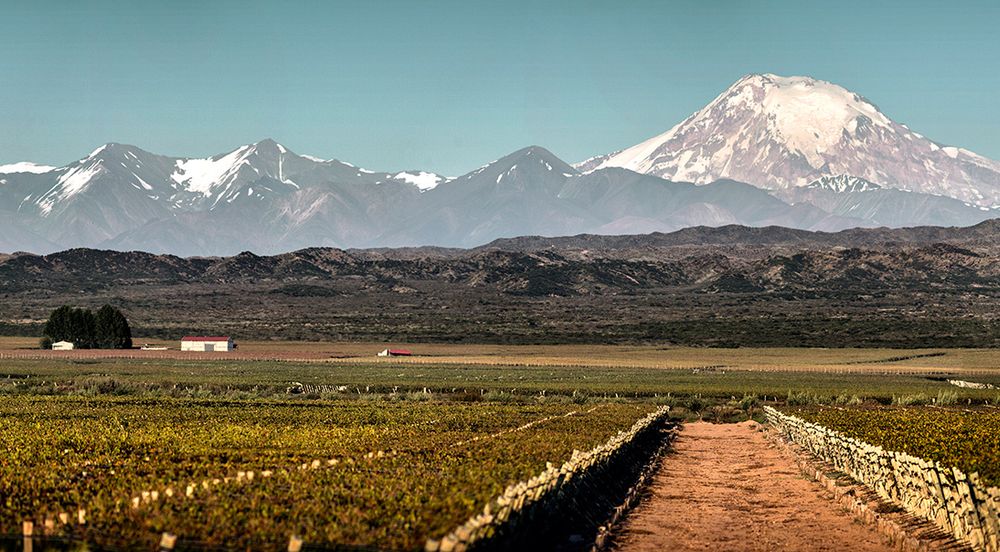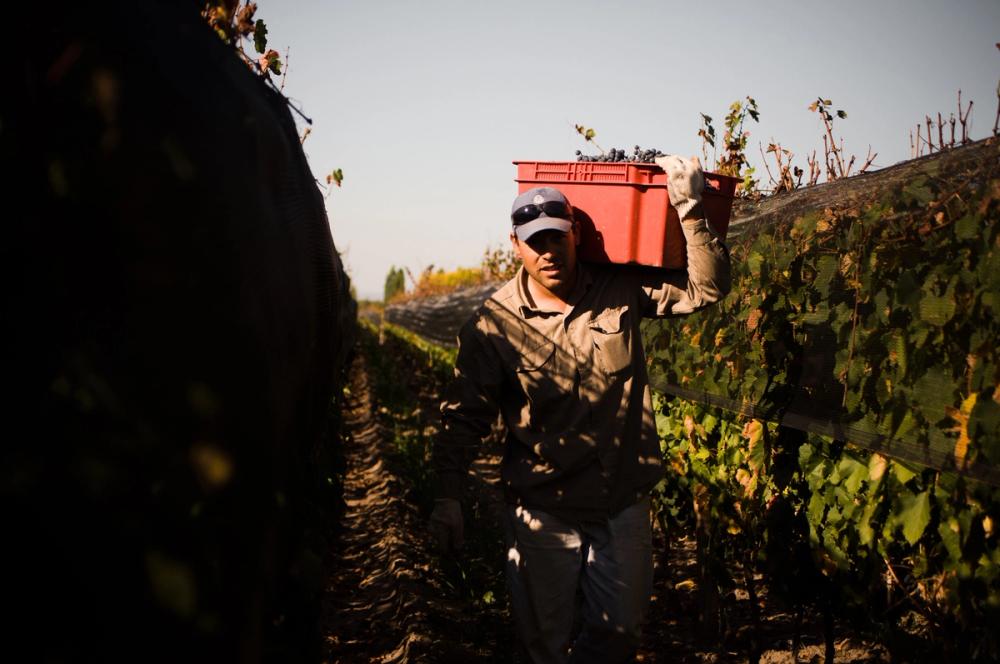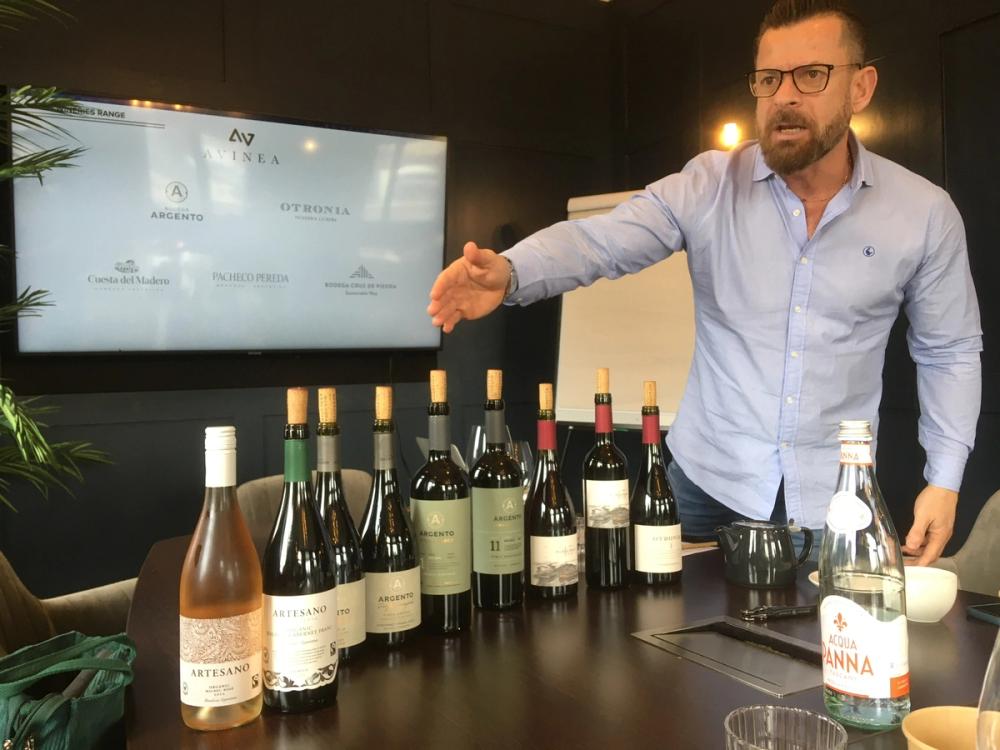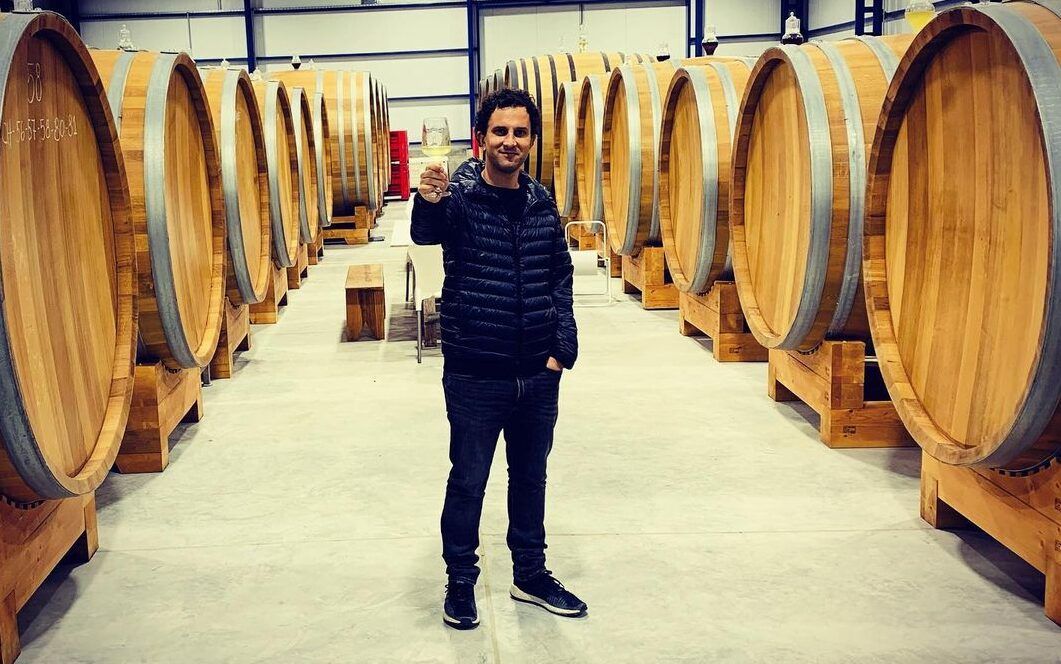“It’s what you might call a Catch 22 situation: we get better and better at other varieties but Malbec is what we are known for and is what drives the business,” Juan Pablo Murgia says.

Juan Pablo Murgia in London to show his wines from Bodega Argento and Otronia
These are tough times for Argentina’s wine industry. Last year saw production fall by 20%, whilst 2023 will see one of the worst harvests for years thanks to a severe drought and late frosts. Matters have been made worse by inflation – which has hit 100% – and the high fixed exchange rate which, in the words of Enrique Vaquie, Mendoza’s economy minister, quoted in the Financial Times, makes exporting wine “like rowing through a river of dulce de leche”.
The introduction of a more preferential “Malbec dollar” this month, along the lines of an already introduced Maize dollar, should make exports easier but it’s been hard going.
“Selling wine at home has been a lot easier than exporting it,” admits Juan Pablo Murgia, head winemaker at Grupo Avinea, in London ahead of World Malbec Day to present a range of his wines.
As part of Alejandro Bulgheroni Family Vineyard group, Grupo Avinea – established in 2009 – has become Argentina’s largest producer of organic wines. It now produces some 12 million bottles of around 100 different wines, divided into five brands, exported to 50 countries and is continuing to grow fast, despite all the domestic challenges.

Alto Agrelo: in the process of organic conversion
The two main brands on the UK market are Bodega Argento – with five Mendoza-based vineyards including the huge Alto Agrelo vineyard, located at 1100 m and in transition to becoming fully organic – and the fully organic Otronia, located 2000 kilometres south, at 45 degrees latitude, in Patagonia where the term “extreme winemaking” takes on a new meaning. Although at the same lattitude as New Zealand’s Central Otago, conditions in southern Patagonia are very different. A range of local challenges and the company’s determination that the Chubut vineyards – in Argentina’s coldest wine region with huge diurnal temperature changes – should be organic from the outset meant the first Otronia vintage wasn’t until 2017 although the vineyards were planted back in 2009.
“Cold temperatures really define these wines but actually cold isn’t the most dangerous factor. Wind speeds here often exceed 70 kilometres an hour so the vines have to adapt to these hostile conditions,” says Murgia.
Unsurprisingly perhaps, given the very different terroir and climate of the two brands, Argento and Otronia couldn’t be more different.
Malbec is king at Bodega Argento, as you might expect for a Mendoza-based outfit, with the Artesano de Argento Malbec-Cabernet Franc – now on the 2021 vintage – a familiar sight in such supermarkets as Sainsbury’s where it sells for around £10. It has just been joined by the refreshing, zesty Artesano de Argento Malbec Rose 2022 (also around £10 from supermarkets) and Artesano de Argento Malbec White 2022. All three are organic and made from grapes grown in Alto Agrelo. The company is promoting all three ahead of World Malbec Day on April 17 with a campaign highlighting the “Three Colours of Malbec,” and emphasising that Argentina’s national grape is much more multi-dimensional than most people think.
Beyond the Artesano series, Argento makes a range of more ‘serious’ wines aimed mainly at the on-trade, including two organic single vineyard wines from Agrelo, a Malbec and a Cabernet Franc and three other single vineyard wines made from two of the other six Argento vineyards in Mendoza, a Malbec and a Chardonnay from high altitude cool Gualtallary (Tupungato, Uco Valley), and another Malbec from Altamira (San Carlos, Uco Valley).
The wines from Patagonia lie at the opposite end of the spectrum, produced mainly in the Chubut vineyard. We tasted through a moreish sparkling wine made from 100% Pinot Noir, delicious high end, very complex Chardonnay and Pinot Noir and three wines in the Otronia 45 Rugientes range, a Merlot, a multi-blend white and another, lighter and more ethereal Pinot Noir.
Distinct these wines may be but Murgia approaches them in the same way, admitting that the fact they are organic is less important than the concepts and philosophy underlying his winemaking approach.

Group Avinea already has 355 hectares certified organic – making it the largest organic wine producer in Argentina
“Sustainability and keeping everything in balance – the water, soil, organisms, vines and the surrounding environment – lie at the heart of what we do, and we call this Matrizviva. Yes, we want to save the world but we also want to make great wine in an environmentally positive way,” he says, saying Argento is en route to becoming fully organic. It is also planning to eventually make wine using only its own grapes, rather than as at present part-relying on trusted growers.
Murgia and his team – working with other producers – have been actively encouraging biodiversity including encouraging Gazania Nivea wildflowers – which he says are beautiful but boost vineyard sustainability – amongst others. They have also been looking to boost the local insect population to encourage pollination but at the same time devising a way of keeping ants, which are a major pest, out of the vineyard.
“There are 13,000 species of ant in the world and in Argentina they are particularly aggressive: they strip leaves from the vines and take them underground, so the vines can’t photosynthesise properly and the grapes get no protection from the sun. Ants can strip 30% of the leaves from a vineyard in just a few days and are the reason, frankly, why many producers eventually give up on organic production. It’s just too hard,” he says.
Argento has built a special ant tunnel which encourages the ants to do their work in a special 50 hectare area outside the main vineyard rather than inside it.
“We don’t want to kill or interfere with them but we do need to make our wine.”

Bodega Argento’s Gustavo Crespo with the line-up of wines at the tasting
Indeed, volumes are set to increase with white becoming an increasing part of the portfolio; the Avinea group is Argentina’s largest producer of Pinot Gris and is gaining recognition for its Chardonnay amidst what has been a revolution in white winemaking in Argentina in the past 10 years. Whilst the on-trade is increasingly focused on these and on Cabernet Franc, which he says has a great future in Argentina, the off trade is still Malbec-obsessed, which it seemingly can’t get enough of.
“It’s what you might call a Catch 22 situation: we get better and better at other varieties but Malbec is what we are known for and is what drives the business,” he says.
Given the quality and diversity of the Malbecs on offer here though, it’s not a bad problem to have – and Murgia for one doesn’t seem to be complaining.
Six of the best wines from Argento and Otronia

Artesano de Argento Malbec White 2022, 12.5%. An unusual full-bodied white wine with the texture and structure of a red, intriguing and delicious. Available at Majestic for £14.99
Argento Single Block Gualtallary Malbec 2021 (Tupungato, Uco Valley) 14.5% and Argento Single Block Altamira Organic Malbec 2021 from Altamira (San Carlos, Uco Valley) 14.5%.
Tasting these two impressive Malbecs together was a joy, with the former – made in high cool climate Gualtallary – showing dark cherry and blackberry fruit, great balance and spicy peppery flavours, and a very long and generous finish. “It’s great when a wine can show you a place, and this Malbec really does that,” says Murgia. The Altamira is less nuanced, but also full on, a quite intense and elegant Malbec, showing red and dark fruit, which will benefit from a few more years in bottle but which is frankly quite delicious now.
Otronia 45 Rugientes Corte de Blancas 2019, 13%. An unusual but very successful blend of Chardonnay (48%), Gewurztraminer (27%) and Pinot Gris (25%) good acidity but quite rounded too, with lychee, peach and mango on the finish. Already quite evolved but will gain greater complexity with another few years in bottle.
Otronia Chardonnay 2020 13.5% – Murgia says this is the top wine of the Otronia project with at least 30 years ageing potential and I believe him. This was truly impressive for cool climate Chardonnay, showing balance and suggestions of white blossom, peach and chamomile on the palate.
Otronia Block 1 Pinot Noir 2019 12.5% – Really very decent and distinctive, complex cold climate Pinot showing spice, liquorice, cherry and clove, with an underlying earthy character. Continues evolving in the glass to show cedar and dark raspberry notes, with a long finish.
Argento and Otronia wines are imported by Bibendum, which is a commercial partner of The Buyer. To discover more about them click here.
































